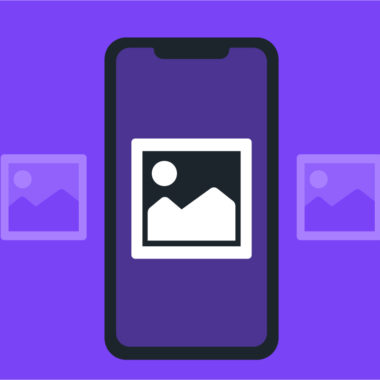Strategic Planning for Marketing Automation, Part 1: Do you know your customers?
This post is part one in “Strategic Planning for Marketing Automation.” This series is focused on topics related to making sure your marketing approach, digital platforms, and business structure and roles are ready for marketing automation and personalization.
- Introduction to the series
- Part One: Do you know your customers?
- Part Two: Do you have the right site structure and content?
- Part Three: Is your business ready to make the most of new platforms?
It should be obvious that in general, your collective customers will want everything online—deep product information; ability to research by complex criteria and attributes; configuration of custom products/solutions; design solutions, best practices; accurate pricing, availability, delivery; quotes and commerce; and training and installation. For B2C products, it’s a little easier, because for most decisions there’s just one person to convince—but knowing your customers is still a big challenge.
So this post focuses more on B2B sales. The biggest issue when trying to understand B2B sales is knowing that the authority to make a decision to buy your product or service is most likely to involve a team of people—and each of the members of that team have a different role to play, and different content needs and expectations. In 2015, CEB research found that on average 5.4 people are formally involved in a B2B purchase, regardless of the size of the company, type of business, product sold, and price of the deal. This research also found what we know to be true—before a business engages you seriously (as in gives you their name) the selection team could already be 60% along the way to making a decision.

Think about it this way: every decision-maker at a potential customer has a role to play when they are on the team. Their job as a member of the team is to use their specific expertise to analyze products and solutions and make a recommendation from their perspective. If you don’t understand what each is looking for, how can you make sure they put your business at the top of the list?
So, if you’re still working around the idea of one “customer” persona, it’s time to do 2 things:
- First, get a lot more granular about all the profiles of who are really interacting with your brand, and
- Second, break down each person’s needs into elements that can be used for automation and personalization.
More granular personas (within an end-user business)
Before you can decide if you have the right content, you have to understand your customer users to a much greater degree, and you have to determine how your digital experience (and selling process overall) can help drive consensus, as much as it can cover the basic delivery of information.
For example, say you manufacture parts that are used in many areas of industry. Not only are people buying replacements (or changing to your brand), you have potential OEM customers who are looking to select a new supplier for their own product, like an engine, or production machine. The new product decision isn’t taken lightly—it becomes an integral part of their own solution, or runs a system that should never have downtime.
Here are some example personas a B2B manufacturer might be considering, and what they might need to learn most about your business and products:
- Platform director: major responsibility for an entire line of business, wants to know your business has low risk and adds value, focuses on strategic direction
- Manufacturing director: responsible for assembly and operations, coordinates complex issues, wants products that don’t add complexity
- Engineer (many types such as chemical, electrical, hydraulic): may have several assisting in the technical selection of your product, directly responsible for seeing if product can perform to specifications and integrates with all sorts of other products/equipment/machinery
- Designer/Fabricator: understands how product fits into assembly, may be coordinating prototypes for next-generation products
- Operations/Maintenance: responsible for implications of process and assembly
- Procurement officer: assists in vendor qualification and selection process, helps drive selection process, obtains consensus, assists contractual/legal purchasing decisions
- Sales/Marketing: helps in understanding value in a new solution
- Testing specialists: may technically understand how to put a product through its paces
No matter what you sell, the team making the decision will consist of many different roles, and the more you understand their needs, the more you can ensure their experience on your site will be successful.
So, make sure you are considering many types of visitors to your site.
Reworking personas to identify content and trackable interactions
With working personas in place, you want to rethink how their needs can be turned into trackable content and interactions. Essentially, you’re preparing yourself to create the formulas and workflows that are used in marketing automation and personalization platforms to your B2B audiences. Reworking personas has two parts.
First, turn the person’s information needs into specific examples of content, offers, and experiences. List out what the person likes, what they don’t like, write up examples of the kind of information they are looking for.
Back to some of the personas above, and examples of what they might look for on your site—you can see how they are looking for very different things:
- Platform director: wants to see if you have a range of products that might work together better for their OEM solution or if you’ve created products specifically for their industrial needs
- Electrical engineer: will want a great deal of all technical specifications, test data, understand customizability, and possibly detailed schematics
- Maintenance manager: will want to know the types of accessories, consumables and repair parts available, and detailed instructions
Second, align personas with data elements from their profiles/user accounts, from business transactions, where they are located, other demographics, and from their click history, from what terms they might search on, from major content you have on site today. Think of it this way: if you were playing “guess the person in 20 questions” and you could ask about human characteristics, content/information and click actions, what would you ask about this person? Some simple examples:
- If a particular anonymous user has visited 2+ times in a week, sets very specific filters while drilling into a product category, and reviews technical specs of several products, they are likely an engineer.
- If a person who is signed up to a general email newsletter follows an industry-labeled link for details on a new retrofit/changeover program, and their browser shows as Canada, you could reasonably assume they are in that industry, involved at a higher level in purchase decisions (perhaps a platform director), and you can offer the specific program (and contact person) for that country.
Now that you’ve drilled down into more granular personas and learned to better identify the specific interactions they’re taking on your site, the next question you need to ask in planning your marketing automation is: do you have the right site structure and content? That’s where we focus on the next post in this series.




